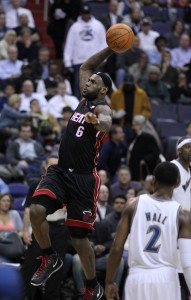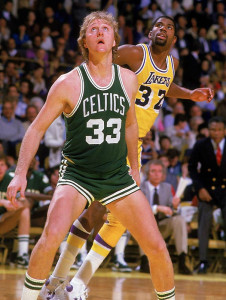Basketball Player Positions Explained: Small Forward
The Small Forward (SF) is one of the most pivotal positions in the modern game of basketball. Often balancing the perimeter offense of a team opposite the Shooting Guard. The SF plays a very wide role within many team’s defensive and offensive systems. Depending on the team philosophy, the specific skills demanded of a player within this position can be varied and challenging.
Physically a player within the Small Forward playing position will be very similar to that of a Shooting Guard. However, the SF will be slightly taller and possibly physically stronger, but still expected to maintain the acceleration and speed of a Shooting Guard. There are two areas of physical play that often separate the potential of players within the Forward position. The first is an athlete’s ability to rebound offensively and defensively. Often players within the Small Forward who are too slight often find this a risky activity and so make rebounding from this position redundant, which ultimately reduces the effectiveness of a team’s ability in this area significantly.

Secondly, players in the Small Forward often are expected to be able to guard players across a number of playing positions. This is often rotation based, for example if a team is short in depth within the Power Forward or Shooting Guard position, the SF will be called upon to guard both positions regularly. This requires the right mix of speed, strength, and defensive aptitude for meeting these demands adequately as a minimum effort and better players within the Small Forward position often able to guard across all five positions on the basketball court.
The offensive tools a Small Forward needs is as wide as the sport of basketball itself. Depending on the offensive system a team selects the Small Forward will often throughout any play have to move from the perimeter to the interior regularly and still maintain offensive production from each position visited.
One offensive skill which is without question invaluable to the position of Small Forward is a breath and depth of shooting range. A Small Forward must have a serviceable three-point shooting range. This is again because of the most regular positioning for a SF being in the role of a wing player on the perimeter for a basketball team. This position also requires the SF to have the ability to possess a mid-range jump shot that again, allows the player to fill a number of offensive scoring positions on the floor.

When examining interior scoring fundamentals many Small Forward’s often prefer facing up to the basket, but having the technical depth to also play back to the basket in a limited capacity is a valuable skill for a player to possess within this role.
Ball handling must be a key feature of a Small Forward in the half court in attacking the basket situations. A SF will need to be competent in isolation, one on one, and on-ball screening situations.
The fundamentals of defence for a Small Forward is mainly focused around footwork and defensive stance in general. Obviously the ability to contain a player from the full court or perimeter in the half court is vital. However, it would not be unusual for players within the SF position having the ability to steal and block shots regularly.
Tactically a Small Forward will need to apt at creating their own scoring opportunities as mentioned earlier from the perimeter or around the keyway. A Small Forward will need to be able to put the ball on the floor to create off the dribble, not only just make shots when opportunities are created for them. It would not be unusual for a Small Forward to be involved in on-ball screening situations as the dribbler, not the screener.
The Small Forward is the prototype of player development within basketball moving into the future. The body type of the Small Forward is the preferred physique that many teams, especially internationally are moving towards for a range of basketball positions, from Point Guards to Power Forwards. This brings with it a highly mobile and high intensity brand of basketball that the Small Forward player is well placed to take advantage of.




